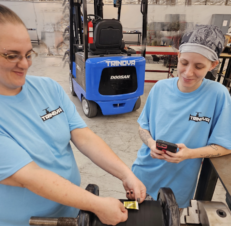by Rich Grimes
Welcome back for another article! We will address some more FAQ’s regarding water heating and related systems. Some of the questions shed light on common installation and service issues. We welcome any questions you may have to offer for future articles – Please send them in!
What is the proper mounting position of a 3-piece inline circulating pump?
A 3-piece inline pump has a motor with a shaft that is connected to the bearing assembly via a coupler. If the motor shaft is misaligned or applying pressure to the coupler and bearing assembly, the parts will wear out and fail prematurely.
The recommended mounting for a 3-Piece inline pump would be to always have the motor shaft in a horizontal position. Motors can rotated on the pump volute for a vertical or horizontal pump body, while maintaining the motor shaft in a horizontal position. Horizontal position is also necessary to oil the pump, with the oil fill cap pointing straight up.
What failures are associated with 3-Piece inline circulating pumps?
Most failures are related to mounting. The design of an inline pump is such that the flanges are designed to hold the weight of the pump. However, the piping must be secured properly for the flanges to hold up the pump. When motors are supported by strut or all-thread rod, the motor is being used to support the weight of the pump. This creates a misalignment and creates stress on seals, springs, couplers and shafts.
Another common installation issue is when an inline pump is mounted in a vertical position, with the back of the motor pointing straight up. This also puts many stresses on components. It takes a true Vertical Inline Pump which has a special motor, bearing and coupler, to install the motor in a vertical position.
What about Cartridge-type, Wet Rotor circulators and their mounting and maintenance?
Cartridge-type or Wet Rotor inline pumps use water to self-lubricate and use a “cartridge”. The cartridge contains a cavity to hold water with an impeller attached. There is no separate coupler or bearing assembly to fail, only a replaceable cartridge. These pumps do not require lubrication and have a long life. They are limited in horsepower but do cover a wide range of applications.
Most wet rotor circulators are capable of having the motor pointing up, in a vertical position, with at least 20 PSI working pressure. This is not the preferred method of the motor in the horizontal position but it has no effect on performance or longevity.
Why is it recommended to install a boiler drain valve when installing a pump?
The drain valve’s obvious use is for draining down water in the piping. If it is located between the service valves, it can provide drainage for pump maintenance. The best benefit of the drain valve is that it allows purging of air and drawing of hot water all the way to the pump.
Are Aquastats and Timers cost-effective for circulating pumps?
Yes and yes! The purpose of an Aquastat is to sense return water temperature on the hot water recirculating pipe. When the setpoint is reached, the Aquastat will power down the pump until it senses the temperature drop or “differential”.
A Timer can be effectively used to control periods of off and on operation. Most users have a pattern of when they use hot water. The timer can save energy when hot water is least likely to be used. Most timers have a by-pass switch to immediately energize and pump in the off mode.
How can the indoor air environment or quality affect a water heater or pump?
The quality of the indoor air is very important to all kinds of equipment. Water heaters and boilers will draw in contaminants with combustion air and it goes straight to the burner. Circulating pumps can accumulate contaminants on the motor brushes and shafts. Surface contamination will corrode parts and cause failure.
There is a wide range of contaminants such as lint, dust, oil, chemicals, paint, solvents, salt, dirt, particulates, etc. They deteriorate components at a rapid rate and can cause multiple operational malfunctions.
Thank you for your questions and we hope this information is helpful to you.
We’ll see you in a future article!




Join the conversation: